3rd Annual Neuroscience of the Everyday World (N.E.W.) Conference, 2025
July 28th – 29th, 2025

This year marked the 3rd edition of the Neuroscience of the Everyday World (N.E.W.) Conference, drawing in 191 in-person and 27 virtual attendees from across the United States and all over the world with registrants hailing from 12 different countries; including South Korea, Germany, Brazil, Turkey, India, and more.
With generous funding provided by the Tianqiao and Chrissy Chen Institute, and co-hosted by Center for Brain Recovery and Center for Neurophotonics, the N.E.W. Conference was designed to bring together researchers and leaders in the fields of computer science, biomedical engineering, cognitive science, neurology, and clinical neuroscience to examine human brain function and continuous brain measurement in real-world activities.
The two-day, sold-out conference held on Boston University’s campus included keynote presentations, speaker symposiums, a neurotechnology panel, poster presentations, and opportunities for networking across fields and disciplines. In addition to the event organizers, the conference was supported by nine total industry partners: six “Gold” Sponsors, and three “Silver” Sponsors.

Keynote Presentations
Hugo Spiers, Professor of Cognitive Neuroscience at University College London, opened day one of the conference with his keynote presentation, Studying Navigation in Cities and on the Ocean. Spiers’ presentation covered his research across numerous studies examining navigational abilities among global populations by analyzing real-world behavior through tools such as video games.
Starting off day two, Maryam M. Shanechi, Professor at the University of Southern California, presented her keynote entitled AI-driven neurotechnology. Shanechi presented on her lab’s research; existing at the intersection of AI, neuroscience, and control theory, to focus on building brain machine interfaces and neurotechnologies that can restore lost emotional function due to neuropsychiatric disorders.
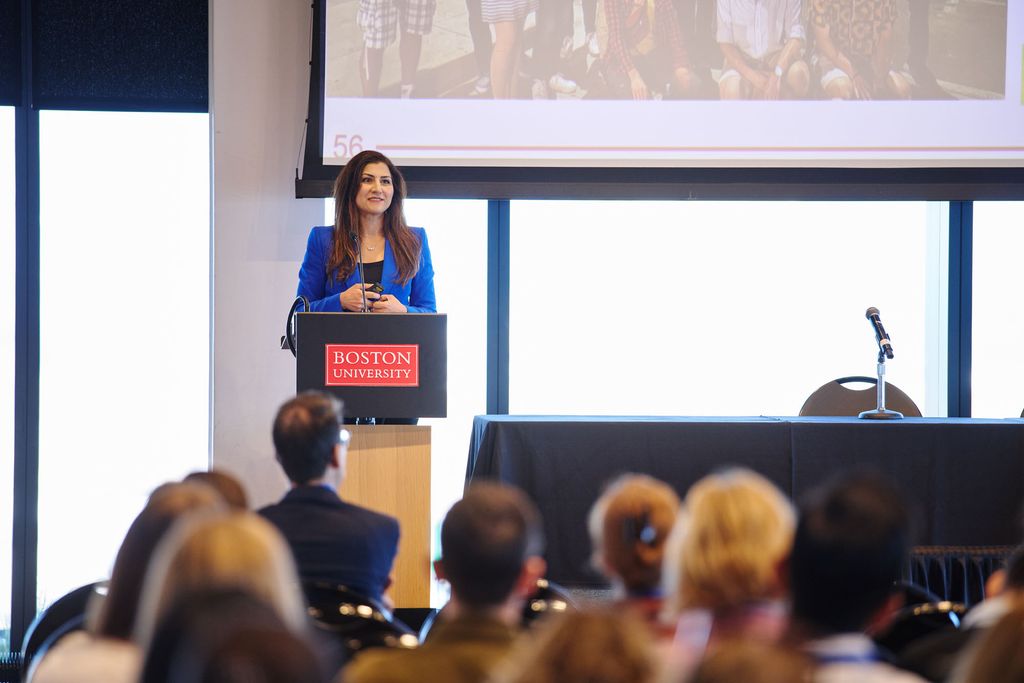
Neurotechnology Panel
Considered a highlight by many attendees, this year’s Neurotechnology Panel Discussion featured industry experts including Dan Adams from Neuralink, Christoph Guger from g.tec Medical Engineering, Katherine Perdue from Kernel, and Brett Wingeier from NeuroPace. In a dialogue between panelists and conference attendees, the discussion revolved around market implementation of neuroscience research and touched on topics of accessibility of technology, expectations of artificial intelligence, data aggregation, and recommendations for the upcoming generation of scientists and engineers.
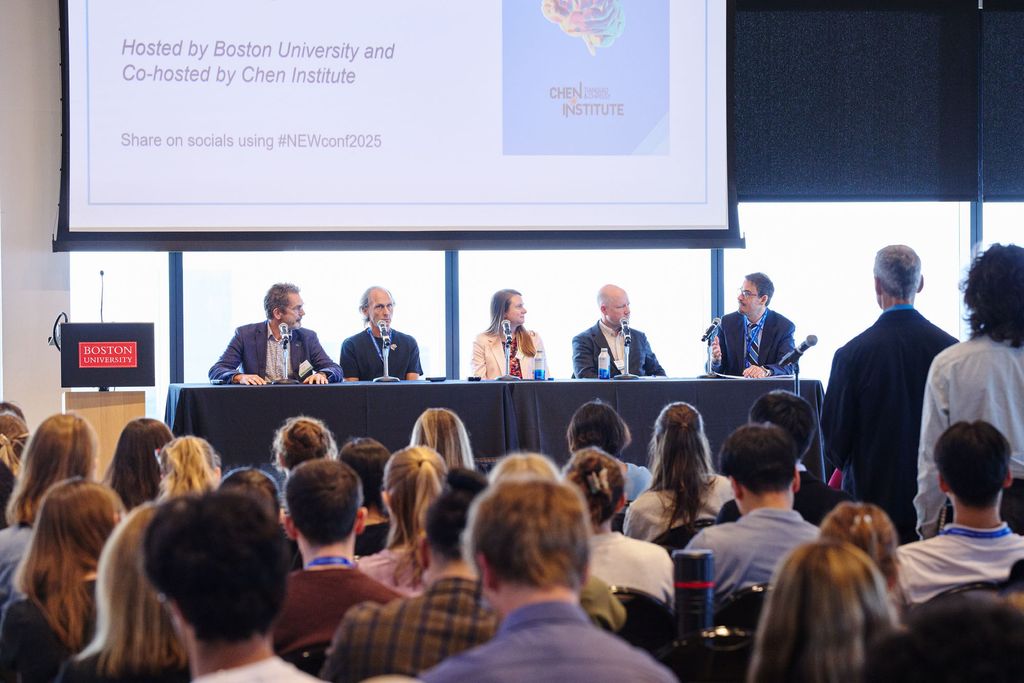
Symposium Presentations
Divided into three symposiums revolving around correlating themes, Symposium 1 focused on Neuroprosthetics and Neuromodulation from Clinic to Daily Life. Marom Bikson (City College of New York) presented on disposable, wearable electrotherapy; Jennifer Collinger (University of Pittsburgh) talked about bidirectional brain-computer interfaces for restoring upper limb function; and Doris Wang (University of California, San Francisco) discussed her research using implanted neural interfaces to improve walking in Parkinson’s Disease.
Symposium 2 centered on Sensing, Modeling, and Shaping Everyday Behavior. James Cotton (Northwestern University) presented on accessible motion analysis for precision neurorehabilition; Mary Czerwinski (University of Washington) looked at AI technologies for promoting emotional resilience and well-being; and Constantin Rothkopf (Technical University of Darmstadt) examined natural goal-directed behavior as bounded planning in belief space.
Symposium 3 was concerned with Mobile Neurotech — Advanced Methods for Real‑World Brain Sciences. Daniel Ferris (University of Florida) presented on mobile brain imaging using high density electroencephalography; Simon Ladouce (University of Leuven) discussed neural and behavioral dynamics in everyday life leveraging environmental sensing and machine learning; Matthew Rizzo (University of Nebraska Medical Center) presented on the importance of real-world digital biomarkers; and Ying Choon Wu (University of California, San Diego) presented her work combining EEG and eye tracking to examine aesthetic engagement.
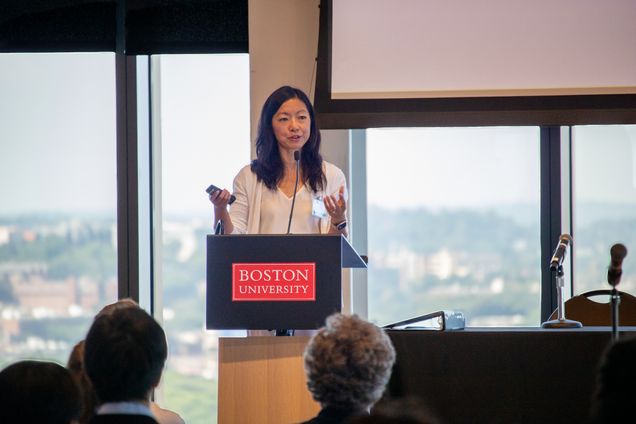
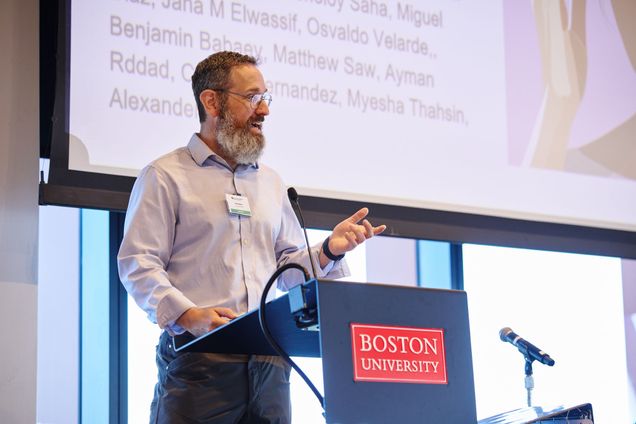

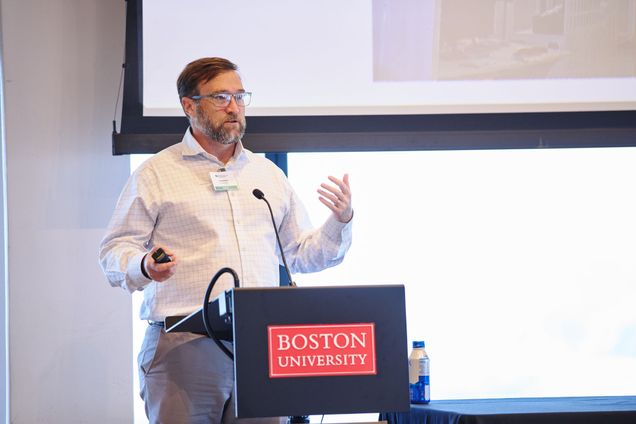
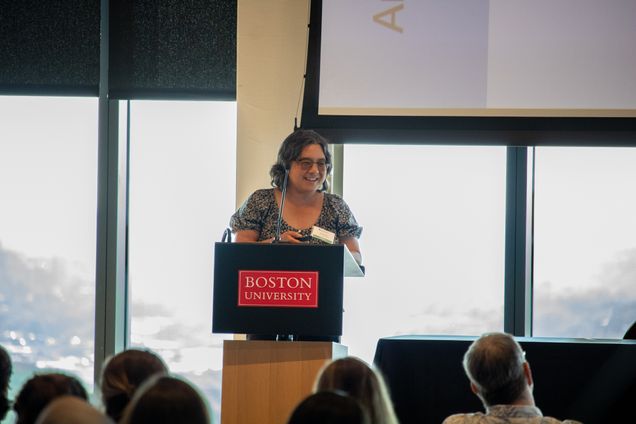
 Photos by Dave Green, Danny Giancioppo, and Kalli Miller.
Photos by Dave Green, Danny Giancioppo, and Kalli Miller.
Poster and Oral Abstract Presentations
This year, the conference received a surge in abstract submissions, with a total of 68 submissions, 48 were accepted as posters, and the highest rated six were selected for Oral Abstract Presentations on stage.

Student-Led Wrap-Up Panel
At the end of the conference, the student trainees provided an enthusiastic and optimistic perspective of the future of everyday world neuroscience research. In particular, the students were excited about the transition from traditional laboratory-based neuroscience to studying brain activity in naturalistic, everyday environments – including classrooms, homes, and during daily activities like walking or swimming. They also emphasized the need for transparency in methodologies, sharing of data across research groups, and standardization of protocols to enable reproducibility and comparison of results across labs.
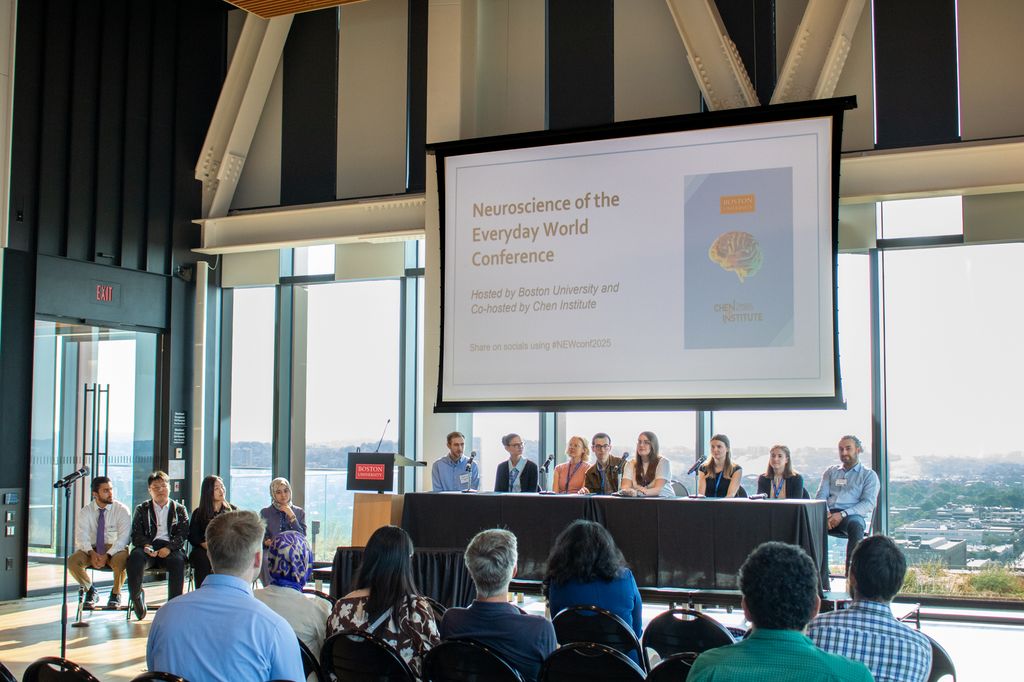
Join the N.E.W. Conference Newsletter
Stay informed about important updates for next year’s Neuroscience of the Everyday World Conference by subscribing to the official N.E.W. Conference Email List.
Photo Gallery
View the full collection of images from the conference by visiting our 2025 N.E.W. Conference Gallery webpage.
Recordings
Subscribe to the CBR YouTube Channel to be updated when we release the recordings of each presentation.
Visit the N.E.W. Conference Website